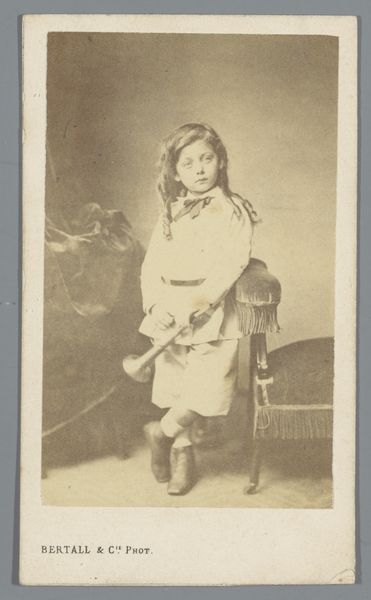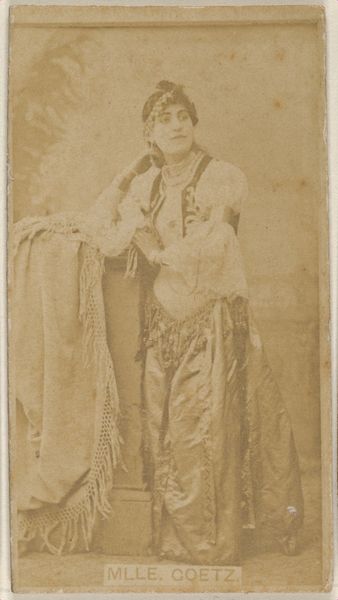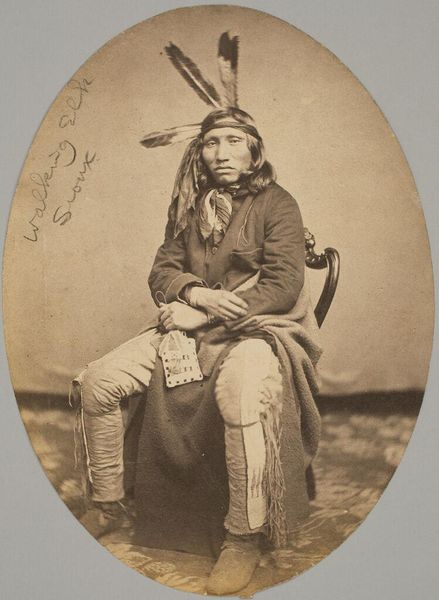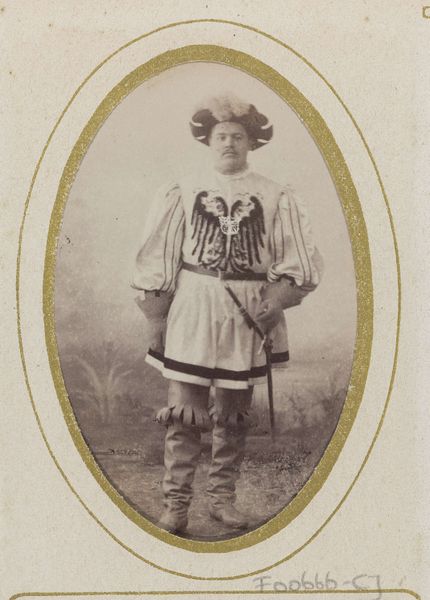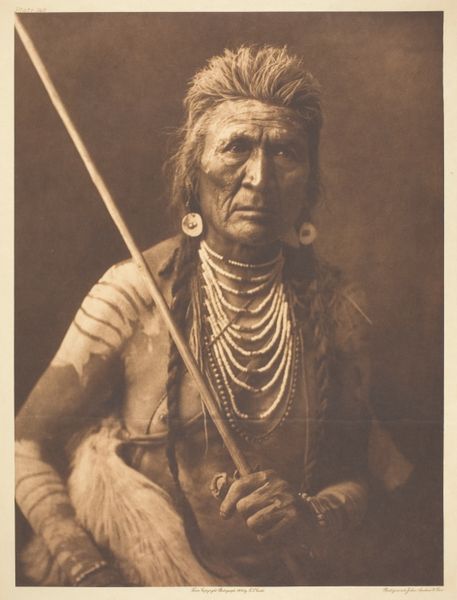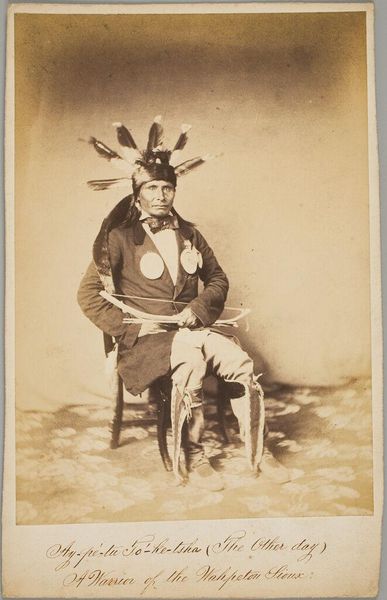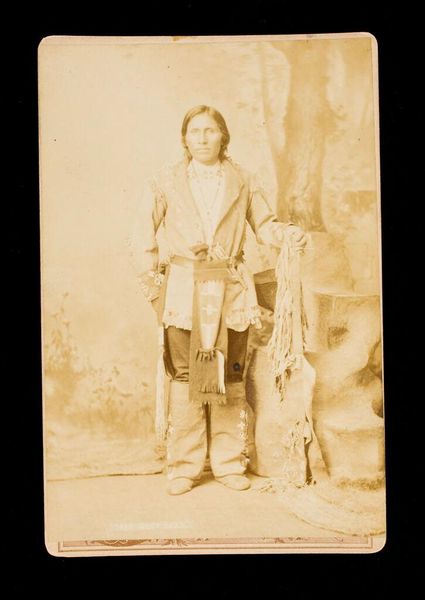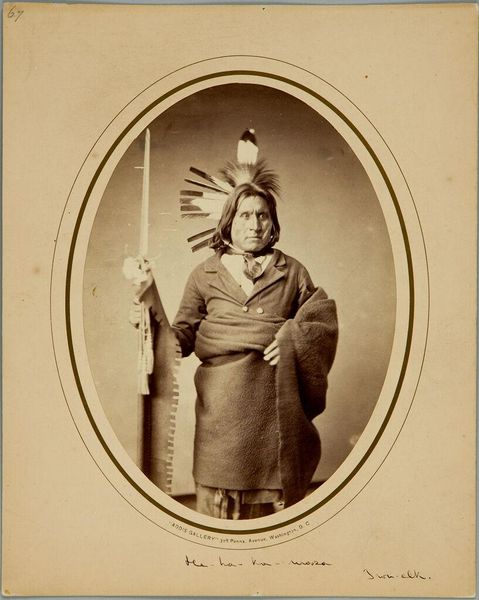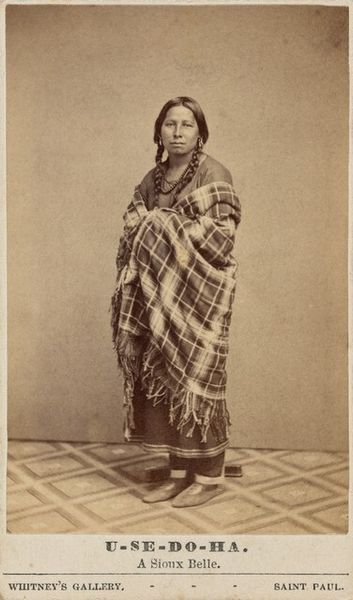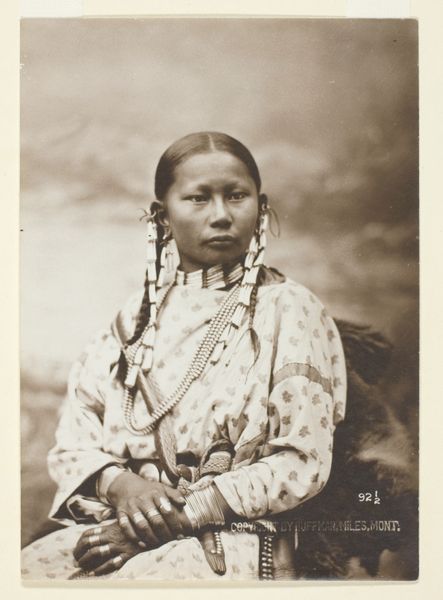
photography, gelatin-silver-print
#
portrait
#
pictorialism
#
photography
#
historical photography
#
gelatin-silver-print
Dimensions: height 137 mm, width 97 mm
Copyright: Rijks Museum: Open Domain
Curator: This image evokes such a complex blend of emotions. The subject is so young, yet he carries a weight that seems far beyond his years. There's an air of forced stoicism that immediately unsettles me. Editor: This gelatin-silver print, taken sometime between 1864 and 1904, is entitled "Portret van een jongen met pijl en boog in de hand", or "Portrait of a Boy with Bow and Arrow in Hand" and is credited to Eugène Pirou. What strikes you about its staging? Curator: The very construction of the scene seems calculated. Look at how self-conscious the boy looks as he holds the bow, not as a tool, but as a prop in the display. It speaks volumes about representation and the performance of identity forced upon Indigenous people at the time. We have to examine this photograph beyond just face value. Editor: Precisely. Photography, as it developed, served various agendas. Examining institutional and cultural forces helps to reveal those complexities. Curator: Absolutely. What narratives are perpetuated by choosing to portray this child in this way? Are we celebrating his heritage, or subtly reinforcing an image of the "noble savage?" And who benefits from these narratives? His vacant stare makes you think what this young person will feel if/when he sees himself depicted for consumption by outsiders? Editor: Consider the setting. A staged backdrop and props like those rocks undermine any sense of authenticity. It underscores the artifice inherent in image making and representation. Even the photographic print process—a colonial imposition, speaks to that complex intersection. It’s another layer, contributing to a deeper unease that is part of his heritage as we interpret it today. Curator: Right, because even a seemingly simple portrait contains so much historical baggage related to the photographer’s lens, colonial desires, and the subject’s experience. By discussing the politics behind his imagery and its continued circulation we might reclaim space for the actual lives it supposedly depicts. Editor: Agreed. Considering the power dynamics allows us to move toward critical viewing of art history, but even photography can promote ethical discussions of visual representation.
Comments
No comments
Be the first to comment and join the conversation on the ultimate creative platform.

